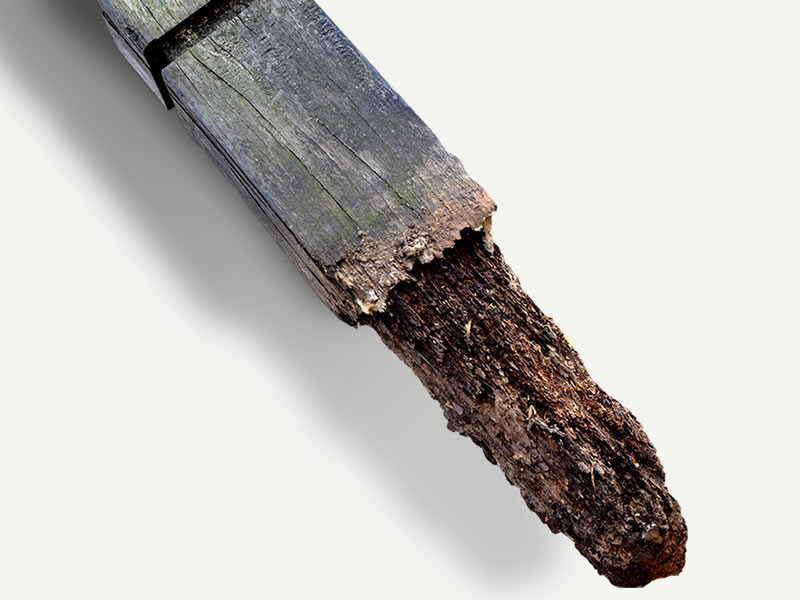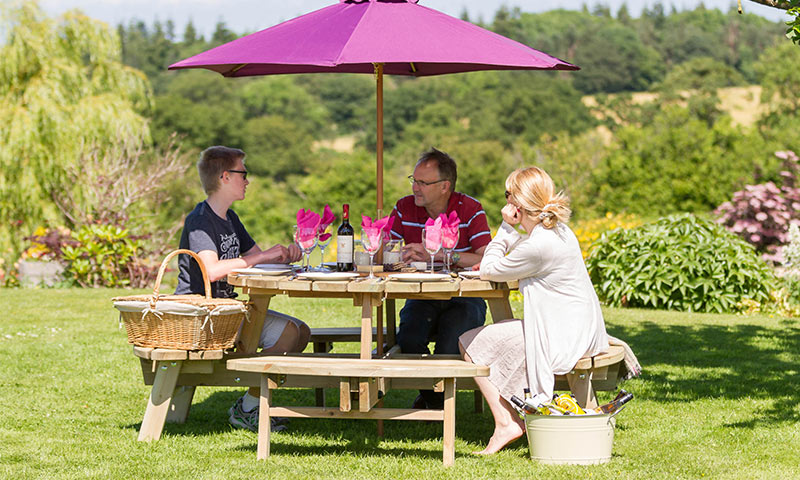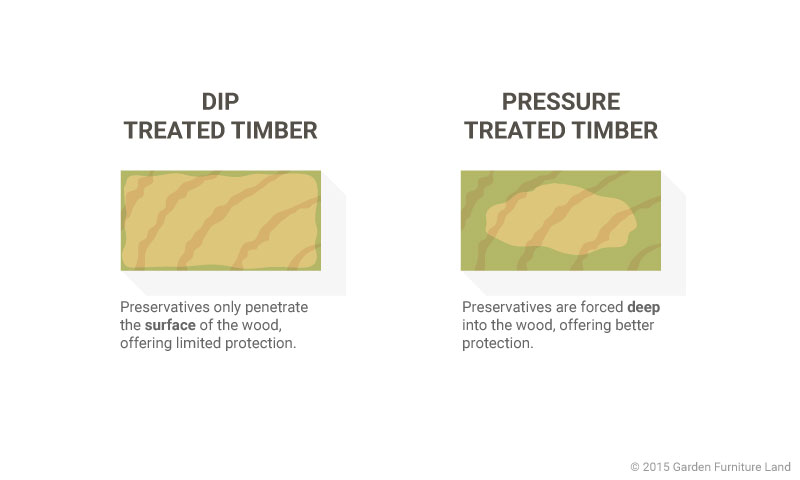
Pressure treatment is an excellent method of extending the lifespan of wood and protecting it against rot. We highly recommend it and use pressure treated wood in the majority of our garden products. But what is pressure treatment and how does it work?
Preserving wood

Wood has to be preserved in order to protect it from rot. If a wooden item isn’t treated in some way, it will be attacked by bacteria, fungus or insects and begin to decay. How quickly this happens depends on the type of wood and the environment it is used in. For example timber items that are continuously wet or exposed to damp conditions — such as fence posts — will rot more quickly than items that are normally dry. But whether it’s a fence, a deck or an entire timber building, if it’s not protected against rot it will eventually become too weak to do it’s job properly and break or collapse.
Wood after all is a dying material, so it is natural for it to decompose. It can however last for years, decades — or in some cases centuries — IF measures are taken to preserve it.
The timber products in your garden will probably have been treated with chemical preservatives — liquids that are sprayed, painted or applied to the surface of the wood. The problem with this method is that it only leaves a thin layer of protection on the surface. All it takes is one scratch or scrape to expose the unprotected wood to the elements.
One way to counter this problem is to soak the wood in preservatives for an extended amount of time, allowing the liquid to soak deeper into the timber. The problem here however is that the extra time needed to do this would slow down production and increase costs for the manufacturer. This is where pressure treatment comes into play.
Pressure treated wood
Pressure treatment uses a high-pressure tank to force the preservative chemicals deep into the timber quickly. This makes the wood much more durable and able to withstand damage and exposure to moisture.
You may have also heard the phrase ‘tanalized’ (or tanalised) timber. This simply refers to Tanalith E — a popular brand of wood preservative used for pressure treatment.
What does pressure treated timber look like?
Freshly pressure treated timber has a greenish-yellow tint to it. This colour will gradually fade away over time. After a few months the green tint will begin to disappear and leave behind a more natural looking colour, then eventually the wood will turn a silvery colour as it weathers.
There’s no need to apply any extra layers of paint, wood stain or varnish to pressure treated wood — although it’s perfectly fine to paint it if you want to.
Garden furniture that needs no maintenance

The great thing about pressure treated wood is that it requires virtually no maintenance. There’s no need to paint, stain, varnish or coat it in any way, and it’s very strongly recommended for things like fence posts, decking, planters and other garden products that are constantly exposed to damp soil.
It’s also great for other garden products that still have to endure the elements — things like fence panels, seats, sheds, garden buildings and decorative items.

